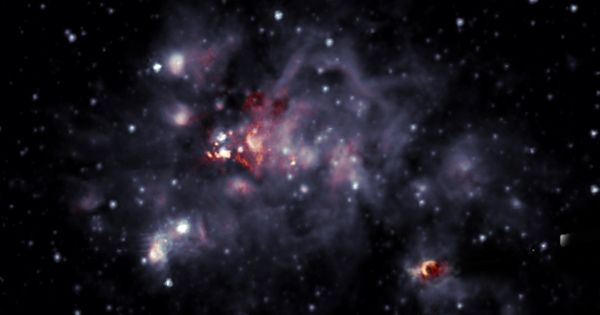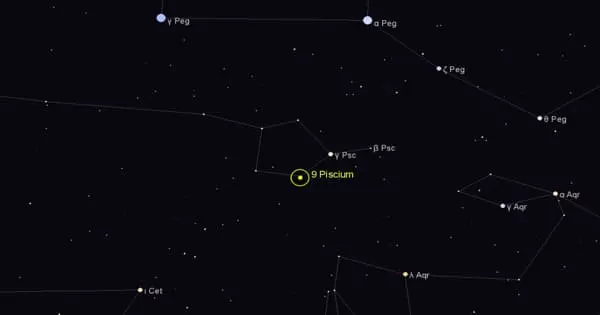Astronomers using the VLA used gravitational lensing provided by a distant cluster of galaxies to detect an even more distant galaxy, which is likely the faintest radio-emitting object ever discovered.
Radio telescopes are the world’s most sensitive radio receivers, capable of detecting extremely faint wisps of radio emission from objects in the universe’s farthest reaches. A team of astronomers recently used the National Science Foundation’s Karl G. Jansky Very Large Array (VLA) to detect a distant galaxy that is likely the faintest radio-emitting object ever discovered.
The discovery was made as part of the VLA Frontier Fields Legacy Survey, which was led by NRAO Astronomer Eric Murphy and used distant clusters of galaxies as natural lenses to study objects that were even further away. The clusters acted as gravitational lenses, bending and magnifying light and radio waves from more distant objects by utilizing the gravitational pull of the galaxies in the clusters.
Astronomers using the VLA took advantage of the gravitational lensing provided by a distant cluster of galaxies to detect an even more distant galaxy that probably is the faintest radio-emitting object ever found.
All astronomers, regardless of institutional or national affiliation, are welcome to use the NRAO telescopes. Observing time on NRAO telescopes is available on a competitive basis to qualified scientists following the evaluation of research proposals on the basis of scientific merit, instrument capability to do the work, and telescope availability during the requested time.
A VLA radio image is superimposed on a Hubble Space Telescope visible-light image in this composite. The prominent red-orange objects are radio relics – large structures possibly caused by shock waves – inside the foreground galaxy cluster MACSJ0717.5+3745, which is more than 5 billion light-years away from Earth.
Detailed VLA observations revealed that many of the galaxies in this image emit radio waves in addition to visible light. The VLA data revealed that one of these galaxies, depicted in the pullout, is more than 8 billion light-years away. The gravitational-lensing effect of the intervening cluster has bent its light and radio waves.

The gravitational lens magnified the radio image of this distant galaxy, VLAHFF-J071736.66+374506.4, by more than 6 times, according to the astronomers. The VLA was able to detect it due to the magnification.
“This is almost certainly the faintest radio-emitting object ever detected,” said Ian Heywood of Oxford University in the United Kingdom. “This is precisely why we want to use these galaxy clusters as powerful cosmic lenses to learn more about the objects that lie beneath them.”
The radio regime is located at one end of the electromagnetic spectrum, where light waves have very low energies. In the late 1800s, the first radio waves were detected, which were caused by the acceleration of charged particles. Radio waves were quickly recognized as an excellent communication tool due to their ease of manufacture and long wavelengths that allowed them to travel great distances unaffected. By the early twentieth century, physicists were aware that the waves could also be produced by natural phenomena such as lightning, but they were primarily interested in avoiding these pesky sources of “noise” in order to improve the clarity, power, and reach of radio communication technology.
“The gravitational lens’ magnification, combined with extremely sensitive VLA imaging, allowed us to see the structure of a galaxy 300 times less massive than our Milky Way at a time when the universe was less than half its current age. This provides us with valuable information about star formation in such low-mass galaxies at the time, as well as how they eventually assembled into more massive galaxies “said NRAO’s Eric Jimenez-Andrade.
















